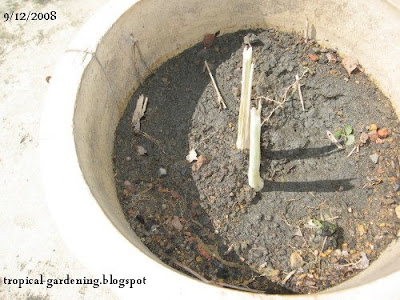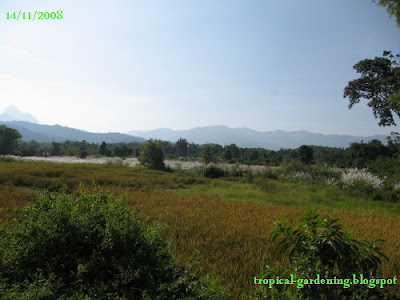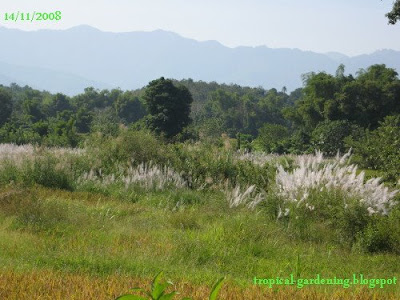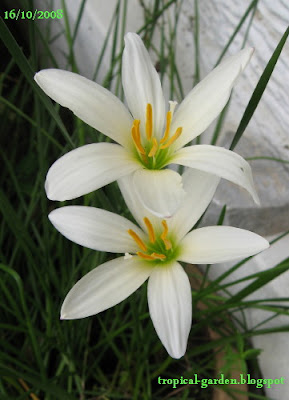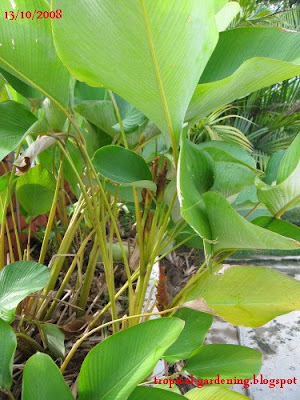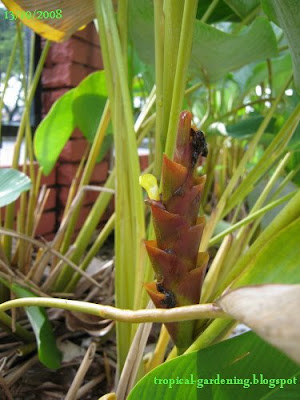Here are a few photos taken after we had started our attempt to reclaim the lawn. We cleared an area and laid down some sods of Philippine grass (as it’s called here) – it’s almost impossible to find grass seeds here for some reason.
I’m not sure what the exact name of the grass is, it seems to be some kind of
Cynodon I think, because it creeps along the ground, propagating via
stolons and rhizomes. But the
Cynodon dactylon that is referred to most often also has ‘spikes’ sticking out with seeds, which this one doesn’t. This kind of grass is also called Bermuda grass, and is very common on golf courses from what I gather.
*Edit 09/04/09*: according to anonymous below, it's actually
Zoysia matrella. Which makes sense, looking at the description. And I think that what I thought were weeds are in fact the "Inflorescence [which] is a short, terminal spikelike raceme with spikelets on short appressed pedicels."
The first photo is a few days after we laid it down. We split up the mats we had bought in order to save money by letting grow to take up the spaces. You can see a stolon creeping across here.

The disadvantage of this method is that there are lots of opportunities for weeds to grow - especially since you have added some nice new topsoil and fertiliser (don't you hate fertilising weeds!) and are watering diligently (not too much, but don't let it dry out).
Three days later: it's grown a small bit, but you can also see the weeds have popped up a lot faster. At this point, it's necessary to weed by hand regularly (ideally every day), just to stop the weeds taking hold.

Nineteen days later, you can see a distinct difference, with the gap getting smaller. The weeds are still there though. Eventually, the weeds have more and more difficulty competing with the grass, and become only an occasional annoyance.

Bermuda grass actually seen as a problem in many areas, as it is very difficult to get rid of – but quite frankly, that’s an advantage compared to the grass we had been advised to get initially. It was called Pearl Grass, and it died off slowly (another story for another post). I would recommend Philippine grass for tropical gardens - it grows well in the sun, does not suffer with too much water, and is very tough and resistant to encroachment by weeds.
If you’re looking for a book on lawns,
The Impatient Gardener's Lawn Book
seems to have some good reviews, and is not too pricy.
